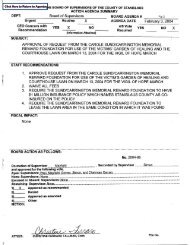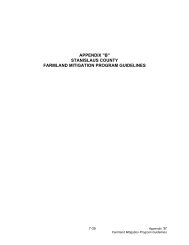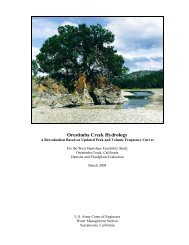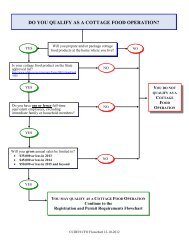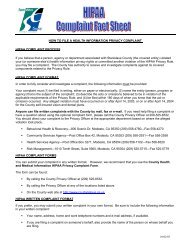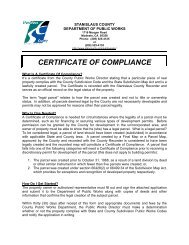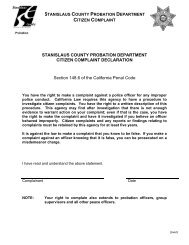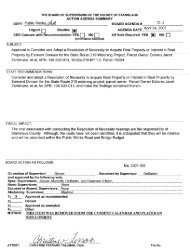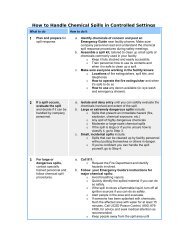Orestimba Creek Feasibility Study - Stanislaus County
Orestimba Creek Feasibility Study - Stanislaus County
Orestimba Creek Feasibility Study - Stanislaus County
Create successful ePaper yourself
Turn your PDF publications into a flip-book with our unique Google optimized e-Paper software.
Economics Appendix – Draft Report - <strong>Orestimba</strong> <strong>Creek</strong> <strong>Feasibility</strong> <strong>Study</strong>, <strong>Stanislaus</strong> <strong>County</strong>, California – September 2012<br />
those costs that are variable depending on the height of the levee (mostly fill material). The<br />
index point used for this height optimization was at the Stuhr Rd. and CCID canal intersection,<br />
so the benefits here appear higher than those reported in the without project chapter of this<br />
report. The optimization of the levee height must use an index point at a location where the<br />
levee would be located to come up with a proper levee elevation. The particular index point<br />
location for the optimization was chosen because it was the first point that flooding overtopped<br />
the existing CCID canal (near Stuhr Rd), which is adjacent to the chevron levee’s location. This<br />
was the original location for the economic evaluation as well, but the index was changed later<br />
based on rating curve sensitivity for high probability events (see section 5.5 of the main<br />
Economic Appendix) and likely overestimation of EAD. Because the CCID Canal location and<br />
the eventual urban economic analysis index location (intersection of Lundy Rd. and the Railroad)<br />
have rating curves with nearly identical slopes for lower probability events (2% (1/50) annual<br />
chance event and above), the difference in an optimization height was assumed negligible. To<br />
confirm this assumption, a sensitivity analysis was performed using the Lundy Rd. index<br />
location and the optimal heights were found to be within 0.2 ft of each other and well within<br />
error bands in stage/ground elevations. The final benefits used for economic justification will be<br />
based on the without project conditions as summarized in Table E- 6. In addition, costs reported<br />
here do not reflect Total Project First Costs; instead these costs represent only those variable<br />
costs in relation to levee height. Total Project First Costs can be found in Table E- 10. This<br />
analysis is solely used for optimization of the levee height in order for costs and residual benefits<br />
to be determined in more detail on only one plan. As shown in Table E- 5 below, the optimal<br />
elevation for the top of levee at this index point is determined to be around 112.75 feet, which<br />
equates to a levee 5.5 to 8 feet tall depending on the ground elevation changes along the levee<br />
alignment. It is noted here that this height is higher than the mean 0.2% (1/500) WSEL, but<br />
because of the alluvial fan type of flooding, the mean 0.2% (1/500) WSEL is only 9 inches<br />
higher than the mean 2% (1/50) mean WSEL.<br />
ES-ix




